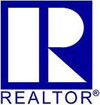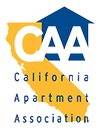Tenant Frequently Asked Questions
1. How do I pay rent?
We collect rents 100% through our online portal. In the online portal you can make payments, check your ledger and submit work orders.
2. How do I submit a work order?
The best way to submit a work order is through the online portal. The online portal is monitored 24 hours a day and there is a dedicated work orders only phone and text number. Please keep in mind that simply submitting a work order (a) does not mean that the tenant is not responsible or that the Landlord/Property Manager will pay for the repair and (b) does not mean that the issue is the Landlord’s or Property Manager’s responsibility to handle. Please consult your lease. For fire, police or towing, please contact the appropriate city department in the city where your property is located.
3. What should I do when I am ready to move out?
The best way to notify us of your pending move out is through the online portal. There you can specify the date of your move out and set up to have your remaining security deposit returned electronically. You can also DOWNLOAD, COMPLETE and FAX TO US the attached Notice of Move Out.
4. When will I get my security deposit back?
California Civil Code Section §1950.5 requires that within three weeks (21 days) after a tenant has vacated the unit, the owner must either: 1) return the security deposit to the tenant, 2) furnish a copy of an itemized statement indicating the amount of any part of the security deposit used (e.g. for unpaid rent, repairs, etc.), or 3) a combination of #1 and #2.
If your building falls under rent control in areas such as the City of Los Angeles, San Francisco or Berkeley, a landlord may be required to pay interest on your security deposit. In most such jurisdictions, the landlord can elect to either pay the interest out on a periodic basis or apply it as an offset to the tenant ledger.
5. Can the landlord deduct from the security deposit?
A landlord can charge a tenant for cleaning, unpaid rent, and damage to the rental unit beyond normal wear and tear. Tenants are required to leave the unit as clean as when they moved in. This includes carpets, drapes, miniblinds, ovens, etc. If the unit was dirty when the tenant moved in they are under no obligation to leave it clean. Tenants are required to pay for damage, but not normal wear and tear, to the unit occurring during their tenancy. Pre-existing damage cannot be charged to present tenants. Normal wear and tear is the degradation of a unit that occurs through its regular use. Examples of normal wear and tear could be: the natural discoloration of walls over time or as a result of poor air quality; the “matting” down or wear of pile of carpeting in high traffic areas (not dirt); warping doors or windows; minor chipping of paint or scratches on counters; and any other aging from normal use that results in depreciation of the property.






